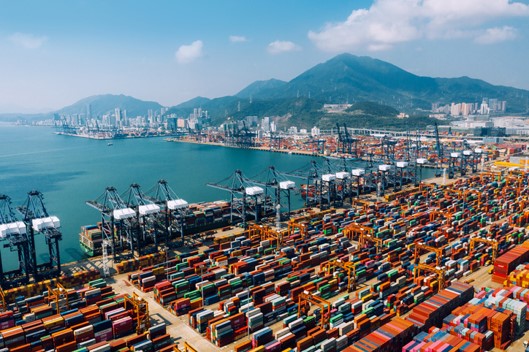1.10 Sea Port Function
- Ports can serve a range of vessels including recreational watercraft, barges, ferries, and ocean-going cargo and passenger ships. The United States has over 150 deep-draft ports, which serve ocean-going ships.
- Seaports are maritime facilities that can comprise one or more wharves where ships can dock to load and discharge cargo and passengers.
- Since the dawn of commerce, people have been using boxes, sacks, barrels and containers of varying sizes to transport goods over long distances.
- Now, an estimated 90% of the world’s goods are transported by sea.
- The average size of a container ship has doubled in the past 20 years alone, with the largest ships sailing today capable of hauling 24,000 containers.

Figure 1.11: Sea Port
Source: https://www.porttechnology.org/news/what-are-sea-ports
- The main functions of seaports are: To ensure safety for seagoing vessels entering, operation in and leaving the seaport. To provide facilities and equipment necessary for seagoing vessels to anchor, load and unload cargo, and embark and disembark passengers.
- Ports are land facilities constructed to transfer goods between water and land. They consist of major features such as:
- Docks or berths where vessels moor;
- Equipment and personnel to load and unload vessels;
- Connections to land transportation (such as highways, railways, and pipelines); and
- Cargo storage areas.